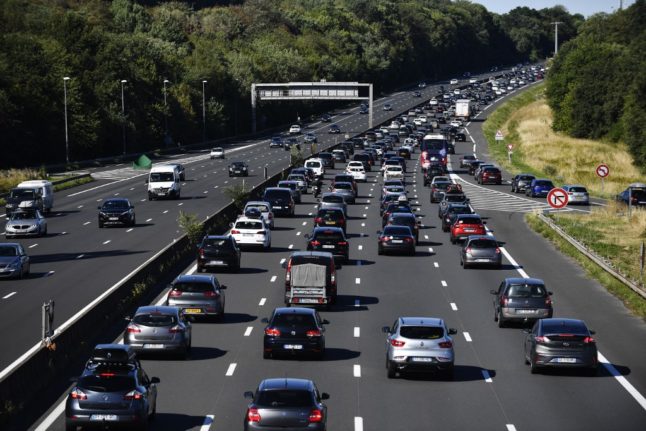If you plan on driving to your car somewhere in the next few days, you’ll have to be prepared to face traffic jams and street closures throughout Austria.
Not only New Year’s Eve events will be causing blockages, but sports events and a large influx of people travelling to ski resorts for their winter holidays will affect traffic, according to road experts at ARBÖ, Austria’s driving association.
New Year running events
Running events across Austria, especially in cities like Vienna, Graz, Linz, and Innsbruck, regularly lead to road closures, affecting local traffic and public transport systems.
The primary running event in Vienna starts at 11 am in the city centre. Several streets in the first district, including the Ringstrasse, will be closed from around 10 am to 1 pm. Public transport via Wiener Linien, including tramlines D, 1, 2, 271, 74A, and tram line 31, will be altered, shortened, or diverted between 9:45 am and 1 pm, causing potential delays.
In Graz, the New Year’s Eve run starts around 2:10 pm, following a five-kilometre route through Mariahilfer Platz, Lendkai, Kalvarienbrücke, Kaiser-Franz-Josefs-Kai, and back to Mariahilfer Platz. Road closures will affect these areas from approximately 1:30 pm to 4 pm. Graz’s tram lines 1, 4, 5, 7, 13, 26, and 67 will have adjustments or replacement services between 2 pm and 4:30 pm.
READ ALSO: Where can I celebrate New Year’s Eve in Vienna last minute?
Linz hosts its main New Year’s Eve run at 3 pm with a three-kilometre route through the main square, Volksgarten, Herrenstraße, and the old town. Public transport services on tram lines 1, 2, 3, and 4 and bus lines 12, 17, 19, 26, 27, 45, and 46 may experience interruptions or stops around 2 pm to 4 pm.
Finally, Innsbruck hosts a New Year’s Eve run at 5 pm, following a route through the city centre, potentially leading to local road closures.
These events may cause disruptions and closures to roads and public transport, with alternate routes or replacement services set up to accommodate the running events and ensure public safety.
Other sports events
The Four Hills Tournament’s third stop at the Berg-Isel-Schanze in Innsbruck will occur from January 2 to January 3, 2023, attracting thousands of ski jumping enthusiasts.
READ ALSO: What are the strict rules in Austria for New Year’s Eve fireworks?
On January 3rd, spectators mainly gather to witness the thrilling competition and enjoy the venue’s unique view. To accommodate the high number of visitors’ vehicles, the Brenner Bundesstraße (B182) between the Innsbruck-Süd highway junction and Innsbruck will be closed from 9 am to 5 pm.
The influx of visitors will impact the city centre, Inntal Freeway (A12), and Brenner Freeway (A13), leading to longer traffic delays and limited parking spaces. Officials recommend using the free shuttle bus service from the central train station to the base of the Bergisel or utilising other transportation options provided by IVB to ease travel congestion.
Parties and parades
New Year’s Eve celebrations in various Austrian cities, including Vienna and seven provincial capitals, offer outdoor festivities for people to enjoy.
Vienna hosts the prominent New Year’s Eve trail, anticipated to draw hundreds of thousands of attendees to the city centre. Road closures are expected to affect significant areas, with Ringstrasse likely closed from Operngasse to Rathausplatz starting around 7:30 pm until about 1:30 am.
READ ALSO: What are the best New Year’s markets in Vienna?
Additional closures could affect Löwelstraße, Renngasse, Schottengasse, and Schulergasse from midday onwards.
To ease transportation congestion, experts recommend using public transportation, as subway lines, numerous tram lines and select bus services will operate continuously from December 31st to January 1st, providing convenient travel options for attendees.
Similar celebrations will occur in other provincial capitals, including Graz, Linz, Salzburg, Innsbruck, Eisenstadt, and Sankt Pölten, where festivities are planned at main squares or historic town areas.
Expect local road closures in these locations, emphasising the advice to avoid personal vehicle use for those attending public New Year’s Eve gatherings.



 Please whitelist us to continue reading.
Please whitelist us to continue reading.
Member comments